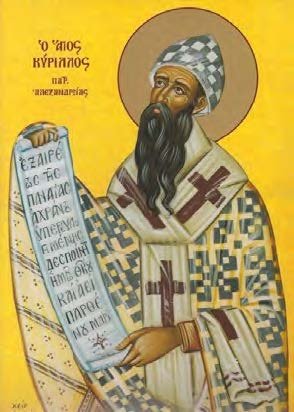I would continue sharing information about the establishment of the major feasts of our Church. The feasts of the Presentation and the Transfiguration also originated in Jerusalem during Cyril’s episcopate. I shall deal with them later since the reasons why they were established in Jerusalem differ from the reasons that I have already presented for the previous feasts.
The historical situation does not substantiate the assertion of some liturgical scholars that Cyril’s liturgical innovations in the 350s and 60s were not adopted elsewhere until the 380s and 90s because they were ahead of their time or because of events surrounding Cyril’s consecration. Cyril was an isolated anti-Arian bishop in a staunchly Arian territory. Both to attack the Arian conception of the nature of Christ and to assert administrative independence from the Arian metropolitanate of Caesarea at a time when Jerusalem’s claim to importance was just beginning to be recognized, Cyril instituted a series of liturgical celebrations which publicly put forth the orthodox conception of the nature of Christ. They did so, moreover, in a manner which filled the vacuum of traditional cyclical festivals and communal demonstrations of unity left by the official demise of paganism under Theodosius I.
The real reason for the gap between the Cyrillian Group’s inception and reception was political. Arianism was in the ascendancy in the time of Constantine II and Valens. At one time or another Arian bishops held the sees of Constantinople, Alexandria, Antioch and Jerusalem, among others. There is no evidence of the general acceptance of a single feast outside of the Core Group before Theodosius I. It was only after the Arianizing emperors died and Theodosius I came to power – after he began removing Arian bishops from their sees, after he required profession of the Nicene Creed (which is believed to have been based on the baptismal creed of Jerusalem), after he called the Council of Constantinople which condemned Arianism and asserted the divine and human natures of Christ in one person – that these feasts spread beyond Jerusalem to be kept through-out the East. This was neither an effort to catch up with Jerusalem’s liturgical practices, nor the Council’s vindication of Cyril’s past actions. Rather, the acceptance of the Cyrillian Feasts throughout the major cities of the East implied an acceptance of the underlying theological concepts. It was at the same time that these bishops gave approval to those concepts at the Council of Constantinople.

